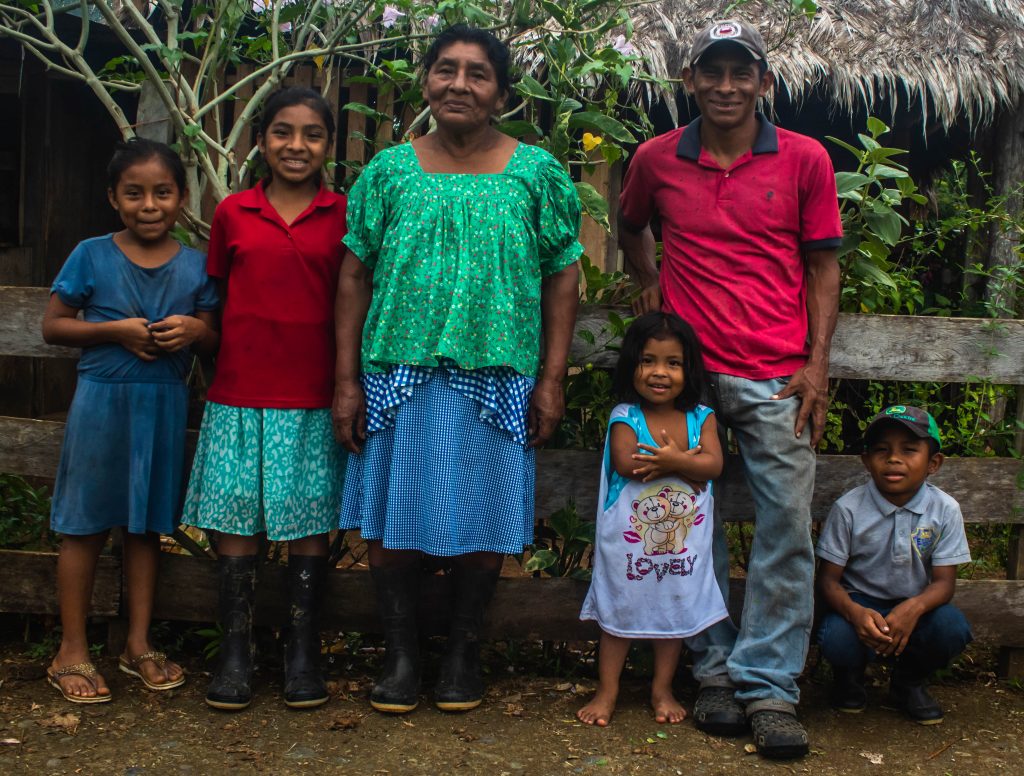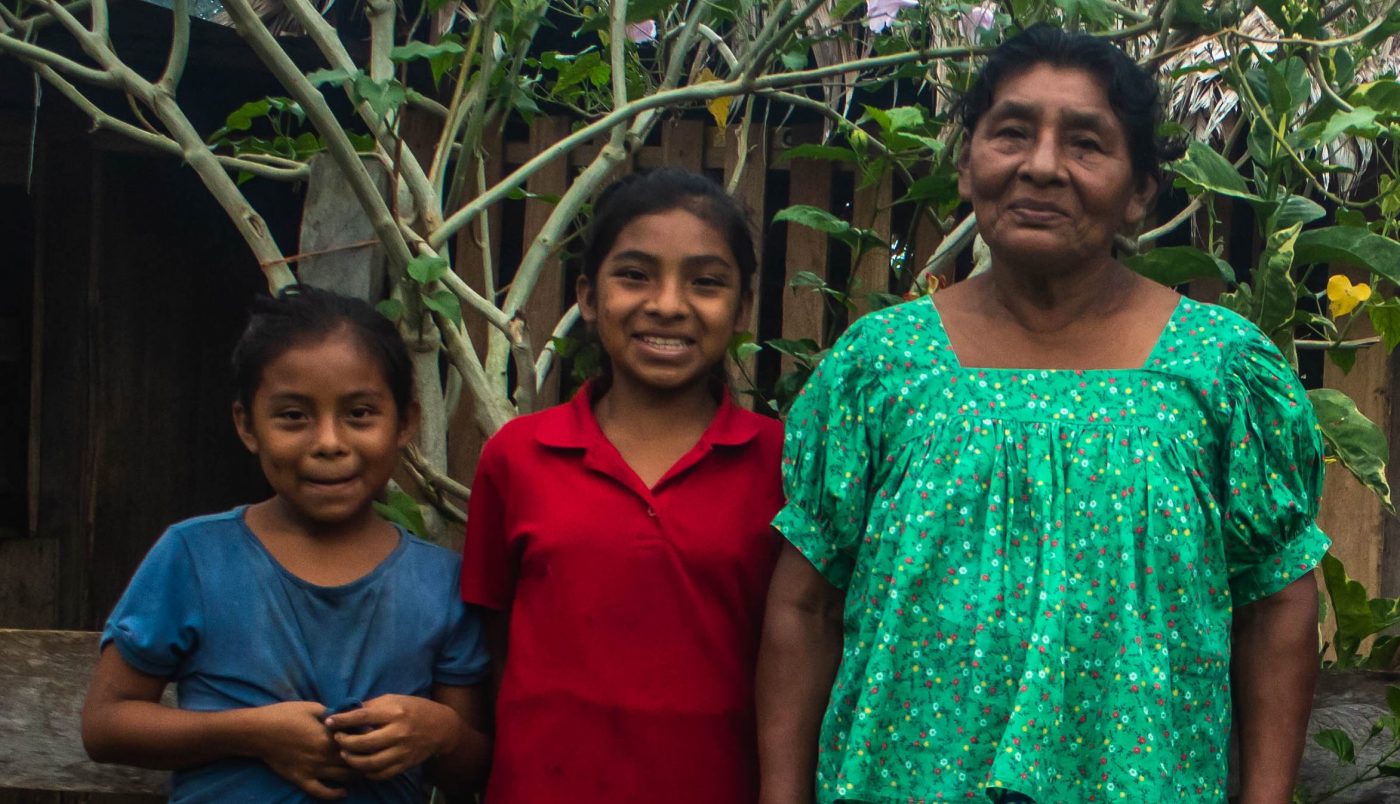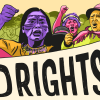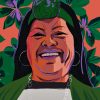Lupita Vargas loves nothing more than to be surrounded by her grandchildren – all 53 of them – at her home in San San Drui, a community of some 700 Naso Tjër Di indigenous people in the North of Panama. The community is a haven of tall green trees nestled along the river side which stand in contrast to the expansive cattle ranch and industrial banana plantations that surround it. “Look over there at the cattle ranch. When I go there, I see nothing, it is totally barren.’’ says Lupita perched on a hammock in the shade. “Look at our side, we have the forest, the river, the animals. If we were to cut it all down – what would we live from? What would we eat?”
“This place is our life, we would never destroy it.”
Lupita is proud of her grandchildren. All of them are at school – some even going to secondary school – an opportunity that she never had. But she is also sad – their future here in their forest home is still uncertain. The President of Panama recently vetoed a law that would have recognised the Naso’s land rights. Having suffered numerous violent evictions in her lifetime from the neighboring cattle ranch, Lupita knows more than anyone else that without secure land rights they cannot live in peace.

Lupita and her family
The first eviction took place when she was 8 years old. A representative of the cattle ranch backed by the military came and told her family that the land was not theirs, that they had to leave. They retreated further into the forest along with hundreds of others. Over the years however the community expanded and decided to move back on to their ancestral land. This was in 2008. A David and Goliath battle ensued – employees of the cattle ranch Ganadera Bocas arrived with police on 30 March 2009 who proceeded to burn some 30 houses, a Naso cultural centre, the school and church while spraying tear gas indiscriminately which left a number of small children hospitalized and traumatized still today. The community nonetheless moved back and re-build only to be evicted again on 19 of November 2009 with 200 police agents outnumbering the community members present. Again they used tear gas and employees of Ganadera Bocas knocked down houses and also fired gun shots in the air.
Representatives of San San Drui felt they had no option but to community travel to Panama City to demand a meeting with the President. Lupita stayed in a makeshift camp in a public square in the city centre for seven months – until they were yet again violently evicted by police and 10 community leaders arrested without charges or a warrant. Lupita and a colleague went on a hunger strike demanding their release – which happened two days later. The case was heard by the Inter-American Commission on Human Rights which called on the Government of Panama to prevent any further forced evictions of the Naso and to compensate those who had lost their homes, crops and animals.
The President refused to meet them but the government did eventually facilitate a dialogue process between the community and the cattle ranchers – a process which lasted five years but finally resulted in a peaceful agreement regarding the land border between the cattle ranch and San San Drui. Today the community lives sustainably producing plantain and cacao – the latter for export to Europe through Fair Trade and they hope eventually to begin to make their own chocolate. But they still do not feel entirely safe. They want legal recognition of Naso Indigenous territory as a semi-autonomous region in what is known in Panama as a Comarca.
“Without the Comarca people can come in here and do whatever they like,” says Lupita who remembers her parents talk about this when she was a child. “All of this talk and today still no Comarca.”
Five of the seven Indigenous People in Panama have their Comarca but the Naso are still struggling for theirs. Last year they came close to having their dream realized when the National Assembly approved Law 656 to create the Naso Comarca. But President Varela vetoed the Law citing environmental concerns – part of the territory claimed by the Naso falls within the UNESCO World Heritage Site the La Amistad International Park. The real reason however according to the community is the influence of powerful business interests such as the cattle ranchers and hydroelectric dam companies. Lupita is angry at the President and has no doubt that using environmental concerns is a farce:
“We want our Comarca precisely so that we can look after the forest. I will continue to fight for my Comarca and for my future.”
And there is still hope. On 21 February the National Assembly insisted and passed Law 656 again. Now it is up to President Varela to finally sign it into law.
With our petition to support the Indigenous Peoples in Panama, 25,615 people told President Varela to protect the forests and recognize Naso Tjër Di Land Rights. Read more about the petition here.



